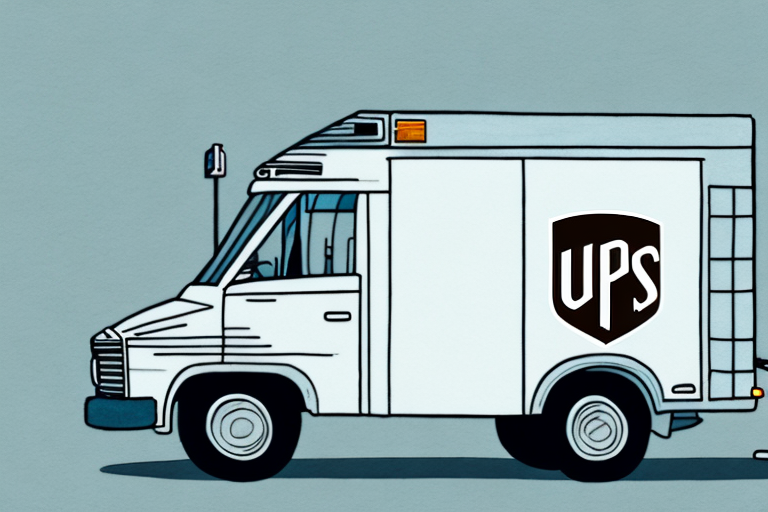Understanding UPS Service Charges
UPS service charges can be confusing for both individuals and businesses. These charges vary based on package weight, destination, and additional services required. This article delves into the different types of UPS service charges, how UPS determines these charges, factors that influence them, and offers tips to reduce shipping costs effectively.
How UPS Determines Service Charges
Package Weight and Size
UPS calculates shipping costs primarily based on the weight and dimensions of the package. Heavier and larger packages incur higher fees due to increased fuel consumption and handling requirements. For accurate pricing, it's crucial to measure and weigh packages precisely.
Distance and Destination
The distance a package travels significantly impacts the service charge. Shipping domestically across longer distances, such as from New York to California, costs more than shorter routes, like New York to New Jersey. International shipments also involve additional costs related to customs, duties, and longer transit times.
Additional Services
UPS offers a range of supplementary services that can affect the total shipping cost. These include:
- Signature Confirmation: Adds security by requiring a recipient's signature upon delivery.
- Insurance: Protects against damage or loss during transit.
- Saturday Delivery: Provides weekend delivery options for an extra fee.
Each of these services enhances the shipping experience but comes with additional charges.
Factors Influencing UPS Service Charges
Seasonal Demand
During peak seasons, such as the holidays, demand for shipping services increases, leading to surcharges. These surcharges help UPS manage the higher volume and maintain service quality. According to [UPS Seasonal Shipping Rates](https://www.ups.com/us/en/services/seasonal.page), rates can increase by up to 20% during peak periods.
Package Characteristics
The nature of the package—whether it's fragile, perishable, or contains hazardous materials—necessitates special handling. UPS imposes additional fees for these specialized services to ensure safety and compliance with regulations.
Strategies to Reduce UPS Service Charges
Efficient Packaging
Properly packing items can significantly reduce shipping costs. Utilizing UPS flat-rate boxes or standard packaging materials ensures optimal weight and size, minimizing extra fees. For more packaging tips, refer to [UPS Packaging Guidelines](https://www.ups.com/us/en/services/shipping/package-options.page).
Compare Shipping Carriers
Before finalizing your shipment, compare UPS rates with other carriers like FedEx or USPS. Tools like [Parcel Monkey](https://www.parcelmonkey.com/) allow you to compare rates and choose the most cost-effective option.
Schedule Pickups
Scheduling pickups instead of dropping off packages at UPS locations can save both time and money. UPS often offers discounted rates for scheduled pickups, especially for businesses with regular shipping needs.
Utilize Online Tools
Using UPS's online tools for managing shipments and tracking packages helps avoid additional fees associated with incorrect addresses or missed deliveries. The [UPS My Choice](https://www.ups.com/us/en/services/tracking/mychoice.page) service provides enhanced tracking and delivery management features.
Understanding Accessorial Fees and Surcharges
Accessorial fees are additional charges that UPS applies on top of standard shipping costs. These fees can include:
- Address Correction Fees: Charged when the provided delivery address is incorrect or incomplete.
- Residential Delivery Surcharges: Applied when delivering to a residential address instead of a commercial one.
- Fuel Surcharges: Adjusted based on current fuel prices and fluctuates accordingly.
It's essential to understand these fees to accurately estimate your shipping costs and avoid unexpected expenses.
Negotiating Better Rates with UPS
Businesses with high shipping volumes can negotiate favorable rates with UPS. Here are some strategies:
- Leverage Shipping Volume: Present your shipping data to demonstrate consistent volume, which can qualify you for discounts.
- Exclusive Use: Using UPS exclusively for shipping needs can enhance your negotiating power.
- Utilize UPS Tools: Programs like [UPS My Business Solutions](https://www.ups.com/us/en/services/business.page) offer resources to streamline shipping and reduce costs.
Regularly reviewing and renegotiating your rates as your business grows ensures you continue to receive the best possible deals.
Common Mistakes in Estimating UPS Service Charges
Mistakes in estimating UPS service charges can lead to unexpected expenses. Common errors include:
- Underestimating Package Weight or Size: Inaccurate measurements can result in higher fees or package rejection.
- Overlooking Additional Fees: Failing to account for accessorial fees can inflate your shipping budget.
- Ignoring Delivery Time Frames: Selecting an expedited delivery option without necessity increases costs.
To avoid these mistakes, ensure accurate measurements, account for all potential fees, and choose delivery options that align with your needs.
Future Trends and Predictions in UPS Service Charges
The shipping industry is evolving, with several trends expected to influence UPS service charges:
- Technological Advancements: Automation and AI can enhance efficiency, potentially reducing shipping costs over time.
- Sustainability Initiatives: Increased demand for eco-friendly shipping options may lead to the introduction of green surcharges, reflecting the cost of sustainable practices.
- Global Economic Factors: Fluctuations in fuel prices and international trade policies will continue to impact shipping rates.
Staying informed about these trends helps businesses anticipate changes and adjust their shipping strategies accordingly.
Conclusion
Understanding UPS service charges is crucial for managing shipping expenses effectively. By recognizing how charges are determined, being aware of influencing factors, and implementing strategies to reduce costs, both individuals and businesses can optimize their shipping practices. Additionally, staying informed about future trends ensures that you remain adaptable in a dynamic shipping landscape.






















